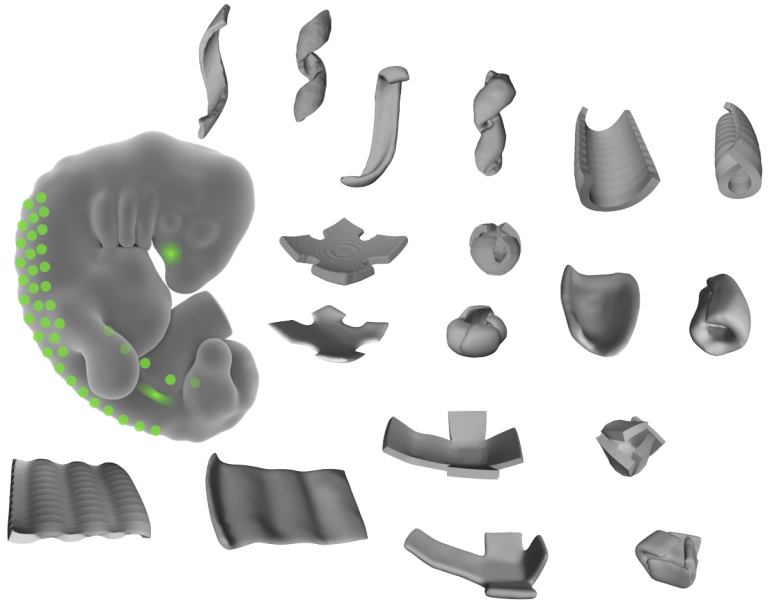Engineers Hack Cell Biology to Create 3-D Shapes from Living Tissue

Scientists used contractile mesenchymal cells from mouse embryos to power self-folding living tissues. Image by Zev Gartner Lab/UCSF
In the journey from egg to embryo to mature organism, our bodies stretch and wrinkle and fold like a fabulously intricate piece of origami. Now UC San Francisco bioengineers have shown that many of the complex folded shapes that form mammalian body plans and internal tissue structures can be re-created with very simple instructions, setting the stage for future applications ranging from lab-grown organs to soft biological robots.
In their new paper – published Dec. 28, 2017, in the journal Developmental Cell – the researchers found that specialized cells called mesenchymal cells play a special role in folding some tissues during development. Like spiders pulling on their webs, these cells can reach out to tug on the network of ropelike extracellular matrix (ECM) fibers that cells naturally secrete around themselves for structural support.
When mesenchymal cells in different parts of a tissue pull on the web of ECM fibers in tandem, the researchers found, they create forces within the tissue that can cause it to bend and fold into a variety of shapes, from the finger-like villi that line the gut and aid in digestion to the buds that eventually form an animal’s hairs or feathers.
